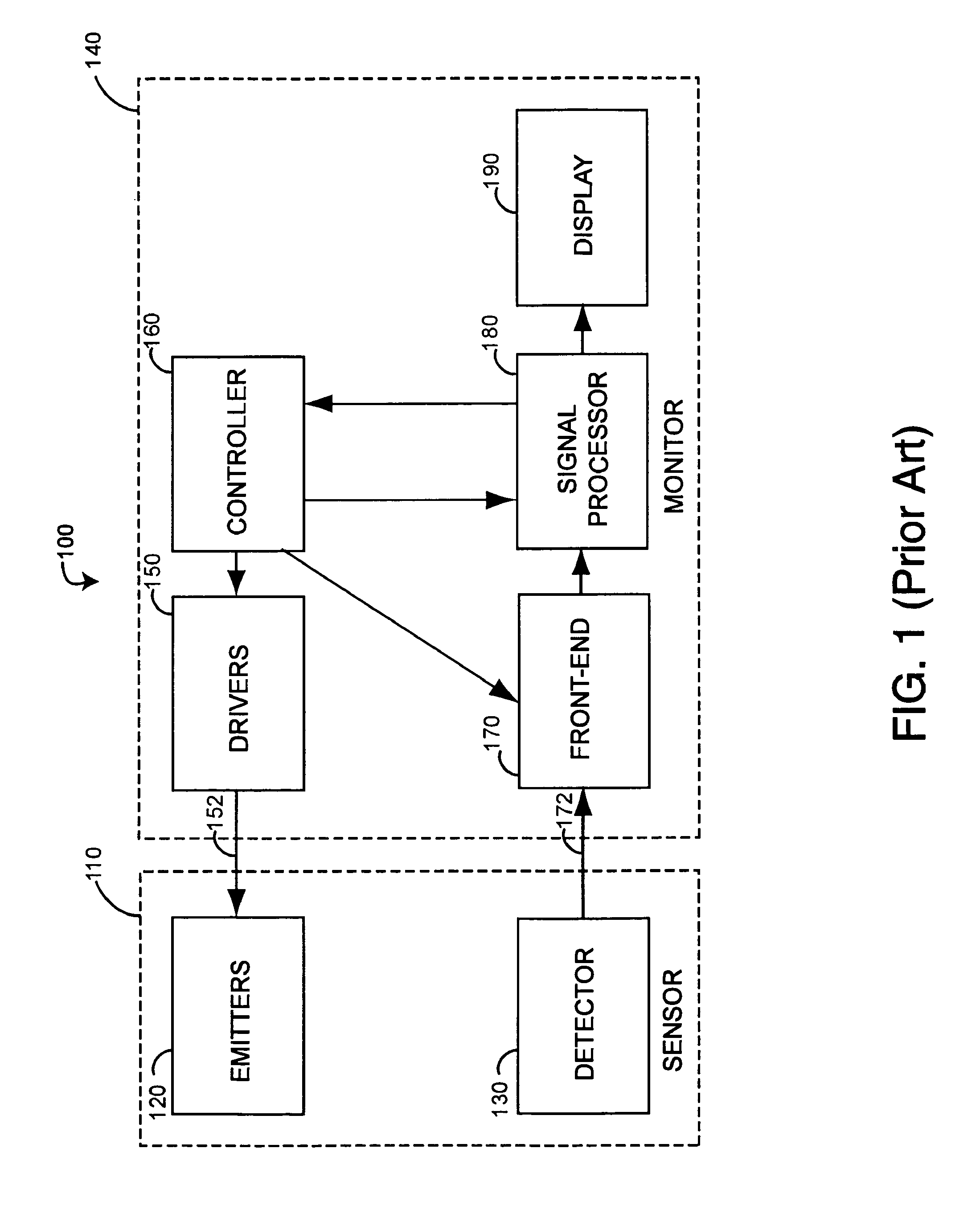Cyanotic infant sensor
a sensor and cyanotic technology, applied in the field of cyanotic infant sensors, can solve problems such as blue discoloration of the skin, and achieve the effects of reducing tissue fibers, reducing mean pathlength ratio, and abnormal tissue ton
- Summary
- Abstract
- Description
- Claims
- Application Information
AI Technical Summary
Benefits of technology
Problems solved by technology
Method used
Image
Examples
Embodiment Construction
FIGS. 3A-B illustrate one embodiment of a cyanotic infant sensor. The sensor has a light absorbing surface, as described with respect to FIGS. 4-6, below. The sensor also has a detector window configured to limit the detector field-of-view (FOV), as described with respect to FIGS. 7-9, below. Advantageously, these features limit mean pathlength ratio variations that are particularly manifest in cyanotic patients.
The sensor emitters and detector are also matched so as to limit variations in the detector red over IR DC response, i.e. RDDC / IRDC, that are not attributed to variations in the mean pathlength ratio (EQ. 3). Such matching advantageously allows for measurement and calibration of the mean pathlength ratio, as described with respect to FIG. 10, below. In one embodiment, cyanotic infant sensors 300 are constructed so that:
λRD≈c1; λIR≈c2 (4)
I0,RD / I0,IR≈c3; for iDC(RD), iDC(IR) (5)
RDDC / IRDC≈c4 (6)
That is, sensors 300 are constructed from red LEDs and IR LEDs that are each matc...
PUM
 Login to View More
Login to View More Abstract
Description
Claims
Application Information
 Login to View More
Login to View More - R&D
- Intellectual Property
- Life Sciences
- Materials
- Tech Scout
- Unparalleled Data Quality
- Higher Quality Content
- 60% Fewer Hallucinations
Browse by: Latest US Patents, China's latest patents, Technical Efficacy Thesaurus, Application Domain, Technology Topic, Popular Technical Reports.
© 2025 PatSnap. All rights reserved.Legal|Privacy policy|Modern Slavery Act Transparency Statement|Sitemap|About US| Contact US: help@patsnap.com



